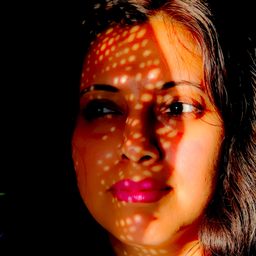- Home
- /
- spirits
- /
- vodka
- /
- virulent death
Virulent Death
How do I prevent the shaker from sticking?
MOREWet the glass or tin slightly before sealing to create a better seal. If it still sticks, tap the side with the heel of your hand to release the seal.
death
Fruity and bubbly
- Dubonnet Red 2 parts
- Triple Sec 1 part
- Grapefruit Juice 1 part
- Champagne - -
champagne saucer
 Virulent Death is a popular Vodka cocktail containing a combinations of Dubonnet Red,Triple Sec,Grapefruit Juice,Champagne .Served using a champagne saucer
Virulent Death is a popular Vodka cocktail containing a combinations of Dubonnet Red,Triple Sec,Grapefruit Juice,Champagne .Served using a champagne saucerdeath Ingredients
Dubonnet Red,Triple Sec,Grapefruit Juice,Champagne,
death Recipe
Stir Dubonnet, triple sec and grapefruit juice (preferable pink) over ice. Strain into champlagne flutes (about a third of the way up) and top up with champagne. Fabulous as an ap
Dubonnet Red
Dubonnet is the Grand Aperitif de France, it is a sweet, aromatic wine based aperitif. It has a wonderful history, and it was in 1846, Joseph Dubonnet created Dubonnet, in response to a competition called by the French Government to find a solution to the problem of it's inability to persuade the French Foreign Legionnaires in North Africa to drink Quinine, the only medicine for Malaria.
Dubonnet is available in Rouge, Blanc and Gold. Dubonnet is known to be the favourite beverage of Queen Elizabeth I and Queen Elizabeth II and Nelson Rockefeller.
The main ingredients of Dubonnet are a Red Wine base with a distinct base of Ruby Red, Ruby Cabernet and Muscat of Alexander, Herbs and spices including blackcurrant, essence of tea and others. Cinchona bark, the original medicinal ingredient derived from the bark of the cinchona tree and cane sugar.
Note that a historical equivalent of Dubonnet is Gin and Tonic, Tonic Water was invented to make European Soldiers in South Asia drink the quinine tonic.
Important Note , Dubonnet is Vermouth, although Vermouth is a fortified aromatised wine, but unlike Vermouth it's primary ingredient was never Wormwood, so Dubonnet is not a Vermouth, although both are very similar and are interchangeable.Triple Sec
Triple-Sec is an Orange flavoured liqueur from France. It is made by macerating sun dried orange peel in alcohol for a day or more before a three step distillation. Triple Sec has a 15% to 40% ABV.
The Triple Sec name refers to the process of distillation. Sec in French means dry or distilled and triple refers to the triple distillation process.
It's been a popular liqueur for more than 150 years, the Dutch East India Company created orange liqueurs by steeping orange peels in alcohol from the island of Curaçao and called it Curaçao liquor, and unlike Triple Sec, the Dutch added spices and herbs to the orange and Curaçao comes in a variety of colours such as clear, orange or blue. Blue Curaçao being the most used of them, in cocktails. Triple Sec is made from neutral spirits and the Orange peel used is harvested from oranges that have the skin still green, so that the essential oils are still in the skin and has not been absorbed into the flesh. This gives Triple Sec the intense flavour.Grapefruit Juice
Grapefruit juice is loaded with vitamins, minerals and phytonutrients, which help in cleansing lymphatic system, nervous system, digestive and excretory system. Consuming grapefruit juice will help you combat fatigue and insomnia. Thus when you add grapefruit juice to your cocktails, it not only enhances the taste of your cocktail, it will hide the smell of the ethanol. and at same time will enhance the nutrient value of your cocktail.
Champagne
Champagne is a sparkling wine produced in the Champagne region of France. Modern champagne is guided by the rules of appellation, which is a legally defined and protected geographical indication primarily used to identify where the grapes for a wine were grown. The grapes Pinot noir, Pinot meunier and Charodonnay are used to produce champagne.
Much ahead of the creation of the sparkling wine, still wines from the Champagne region were known since Medieval France. The Romans established vineyards in the Champagne region and these vineyards started to produce a light, fruity red wine that was a contrast to the heavier Italian brews.
Later Church owned vineyards started producing wines for ceremonies and festivities like the coronation, but the wine makers of Champagne were envious of the reputation of their neighbouring Burgundy wine makers, but the cooler climate of Champagne was a challenge to the production of red wine, and the grapes would struggle to ripen fully, and would have bracing levels of acidity and low sugar level, that would result in lighter and thinner red wines.
The oldest record of sparkling wine is Blanquette de Limoux, a wine invented by Benedictine monks in the Abbey of Saint-Hilaire, near Carcassone. Sparkling wine is created by bottling the wine before the fermentation has ended and another method is by addition of sugar and yeast to trigger a second fermentation in a finished wine.
However, despite the accidental invention of sparkling wine in France outside the Abbey, and despite recording of the in bottle second fermentation process of a finished wine been recorded in the Abbey of Saint-Hilaire by English scientist Christopher Merret in 1662 and noted as a process in use by the Benedictine monks since 1531, wine makers in Champagne were unable to use what is now known as the méthode traditionnelle or particularly méthode champenoise in Champagne until the 17th Century.
This was because glass manufacturing in France was not advanced enough to manufacture bottles that could withstand the internal pressure of the carbonation process. They used Méthode rurale, the early method used by the monks that created Blanquette de Limoux, in which the wine is bottled before the first fermentation is finished, and the yeast sediment after fermentation remains in the bottle.
The méthode champenoise which alternatively is known as méthode traditionnelle outside Champagne uses a second fermentation by adding a little sugar and yeast and then the sediment is slowly removed after an elaborate process of riddling and then disgorging, a process of removing the lees, the sediment that has settled at the neck near the cap of the inverted bottle.
So, in short, sparkling wines are produced outside Champagne too, and like Limoux can be of exquisite quality, but the Champagne due to early clever marketing, became associated with royalty in the 17th, 18th, and 19th centuries and thus became a popular drink for the middle class too. Which created the legend of Champagne and now, with successful Geographical Indication Appellate, Champagne as a name and the name méthode champenoise can only be used by Champagnes that meet the requirement of the Appellate, and are from Champagne and Champagne only.
Trending Recipes
Please Note All Recipes and Articles on this site are for entertainment and general information only. None of it is to be considered final or absolutely correct or medical in nature.
However, we have embarked on a journey of manually updating the relative strength of cocktails, their flavour profile and in the future aim at providing approximate calories per drink too.
Blue Tick Project:We aim at manually validating and verifying each cocktail in their current context and mark them as valid, where, a blue tick would mean that the recipe has been verified and is 100% accurate while an orange tick would mean the recipe has low confidence.
Where as a grey tick would mean that the recipe has not yet been manually validated or verified recently.
Note: The Cocktail photos used are graphical representations of the glass and colour of a drink, these are generated using information from the recipe and we personally strive at providing real photographs of cocktails and we hope we can replace all representational photos with real photos soon.
Contact Us using the Email Contact on the Sidebar if you think any Copyrighted photo has been unintentionally used on this site, and we'll take remedial action.
Some of the Photos are sourced from Royalty Free Photo Platforms like FreePik, Unsplash and Wikimedia Commons
About Us
Neel B and Mani, we are a team of two, from Calcutta, India. We are professional software engineers and passionate cocktail enthusiasts. We built this app because we saw a need for a more comprehensive and user-friendly way to find cocktails and bartending recipes. We hope you enjoy using our app as much as we enjoyed making it!We decided to use our technology skills to help others who were in the same position as us and wanted to experiment with making cocktails at home but didn\u2019t know where to start. We have been working together for more than two years and has managed to collect an extensive library of recipes as well as tips and tricks for making the perfect cocktail.
 Neel B is an Electronics and Telecommunications Engineer and martial arts and fitness enthusiast. He is an avid reader, compulsive doodler, and painter. His love for cocktails arises from the art in it and the history that traces the ups and downs of modern civilisation over centuries.
Neel B is an Electronics and Telecommunications Engineer and martial arts and fitness enthusiast. He is an avid reader, compulsive doodler, and painter. His love for cocktails arises from the art in it and the history that traces the ups and downs of modern civilisation over centuries. Maniis an ERP and SaaS developer and architect by day and a cocktail enthusiast in her leisure. She holds a Masters in Computer Application and Programming. In addition to writing stories on the history of cocktails and alcohol, she has a special interest in cocktails in literature. She believes that the perfect cocktail can make any moment special.
Maniis an ERP and SaaS developer and architect by day and a cocktail enthusiast in her leisure. She holds a Masters in Computer Application and Programming. In addition to writing stories on the history of cocktails and alcohol, she has a special interest in cocktails in literature. She believes that the perfect cocktail can make any moment special.
